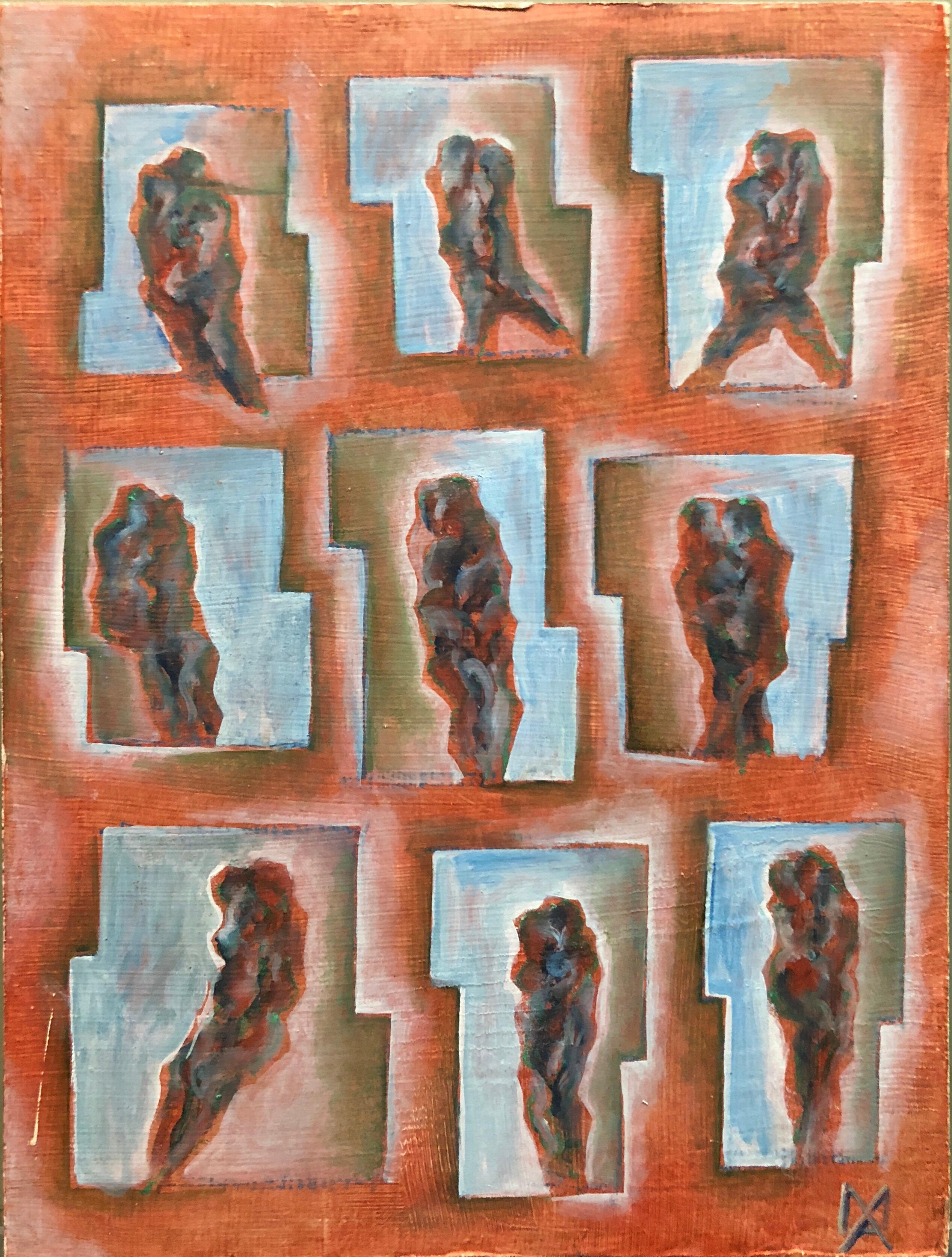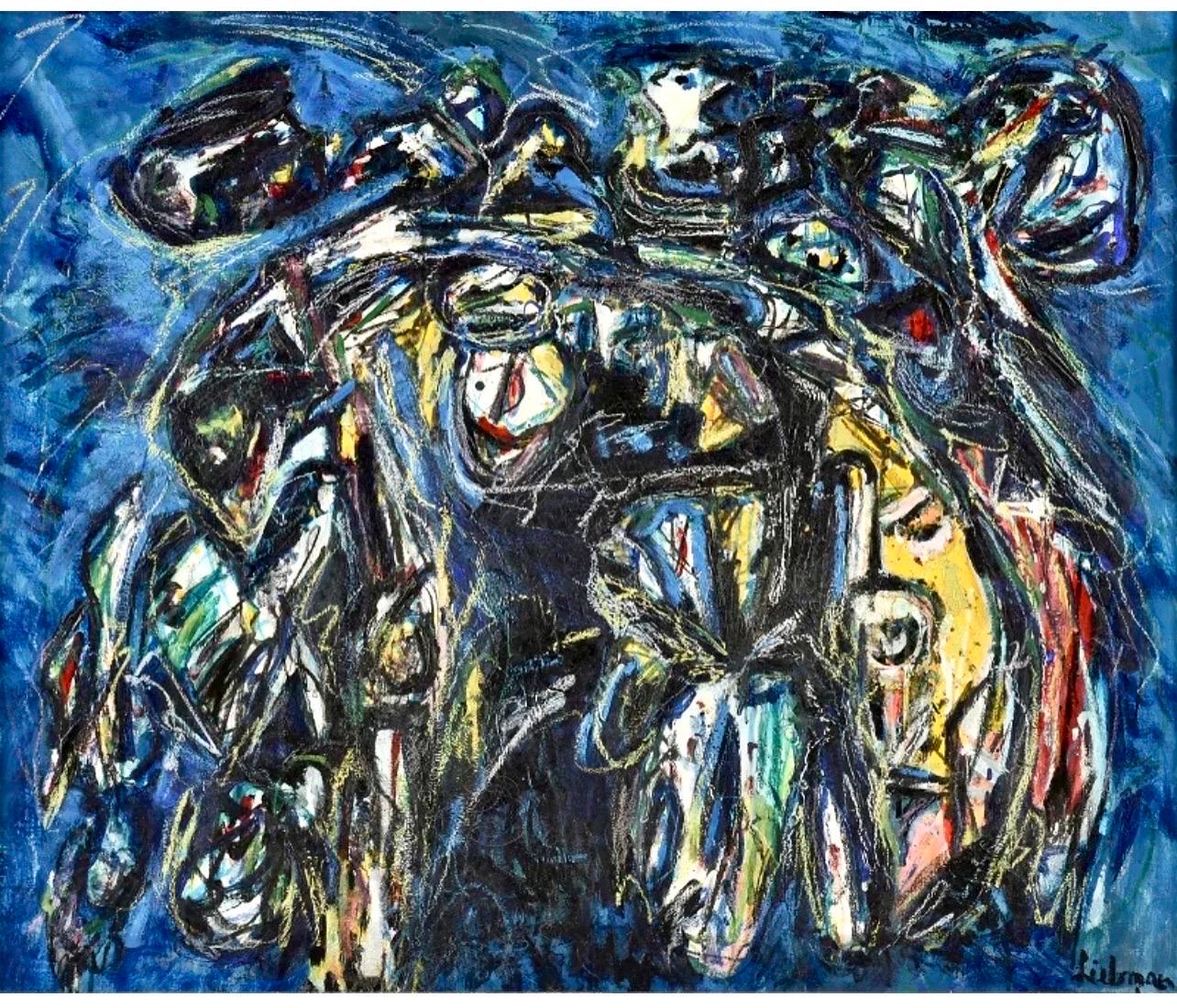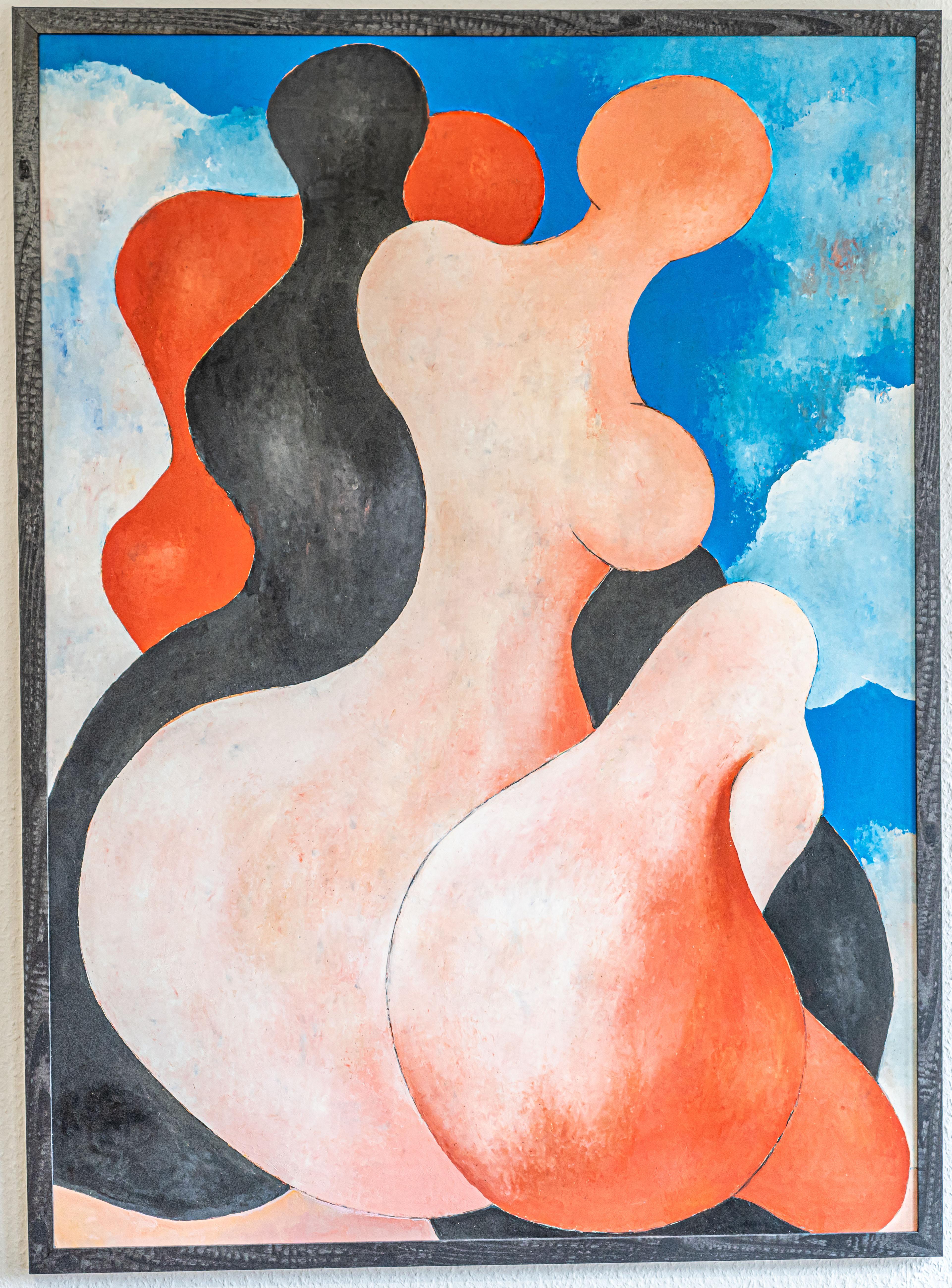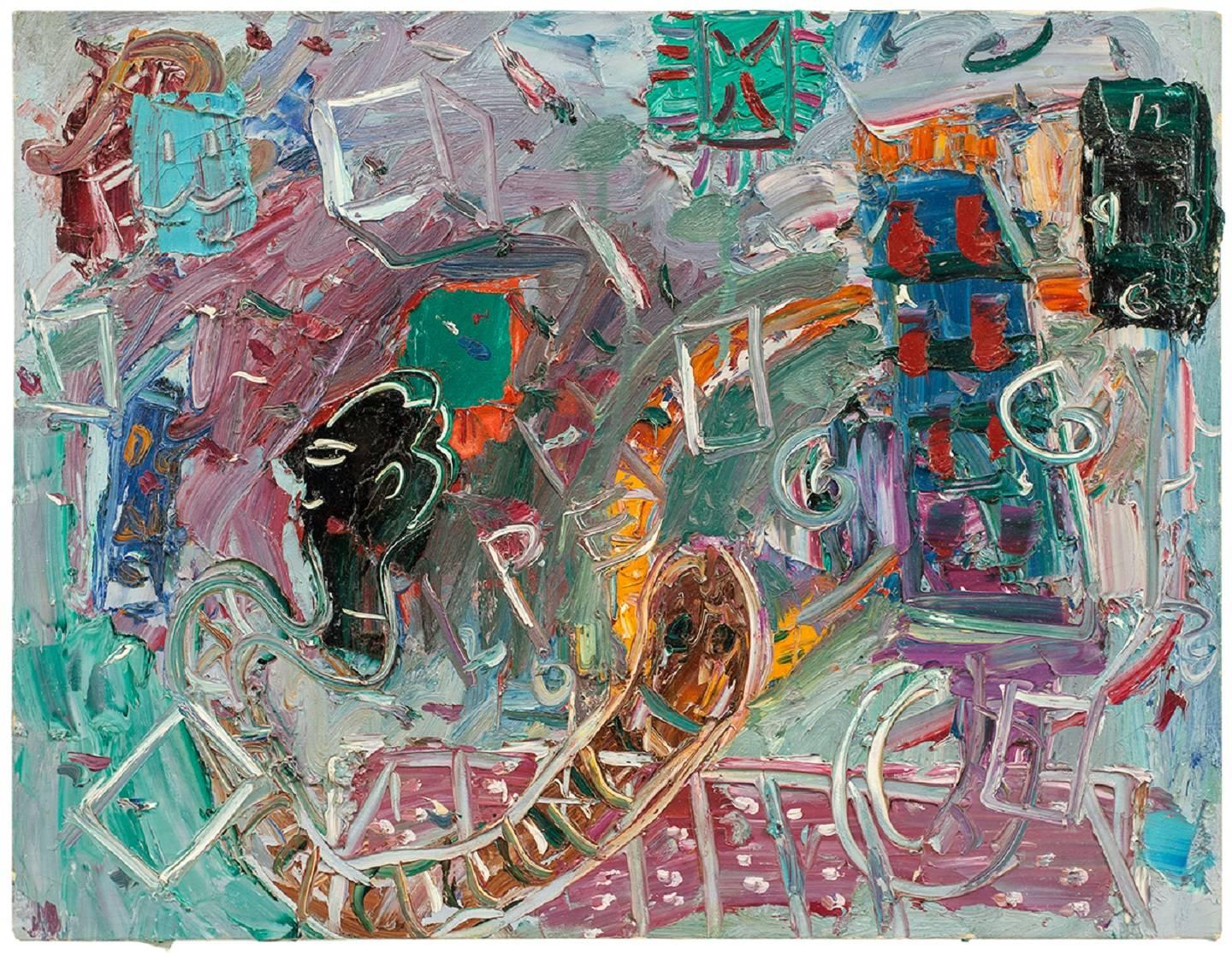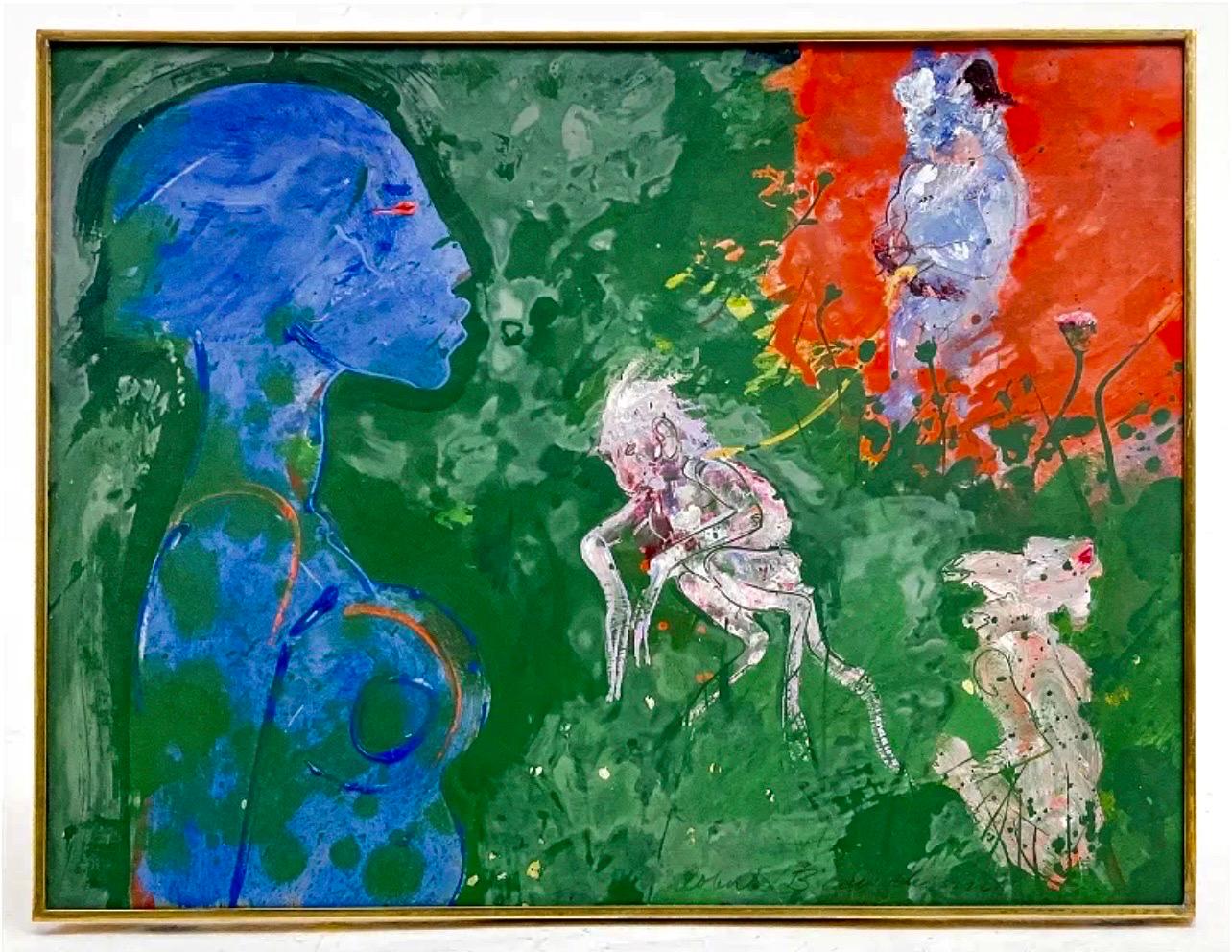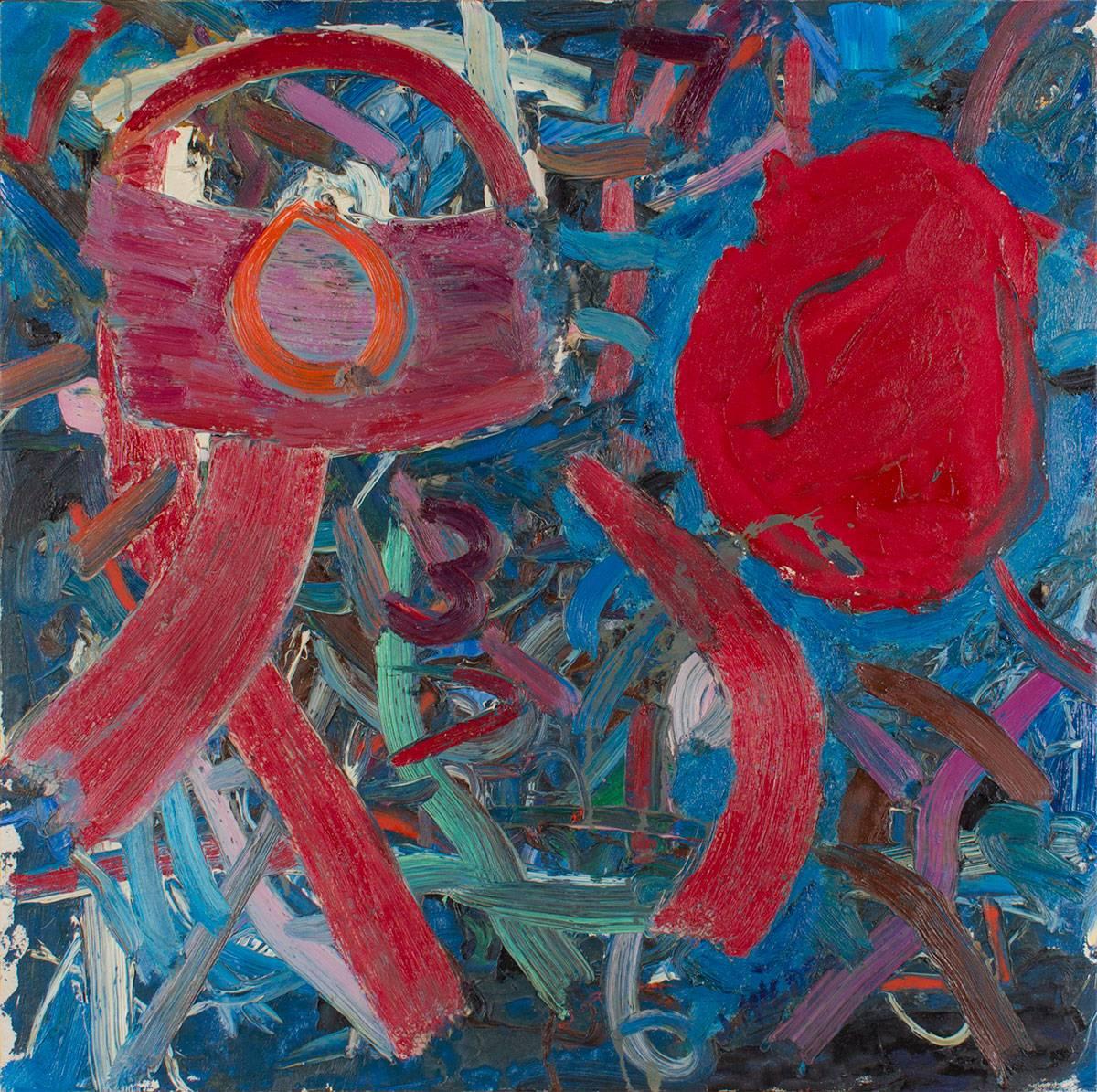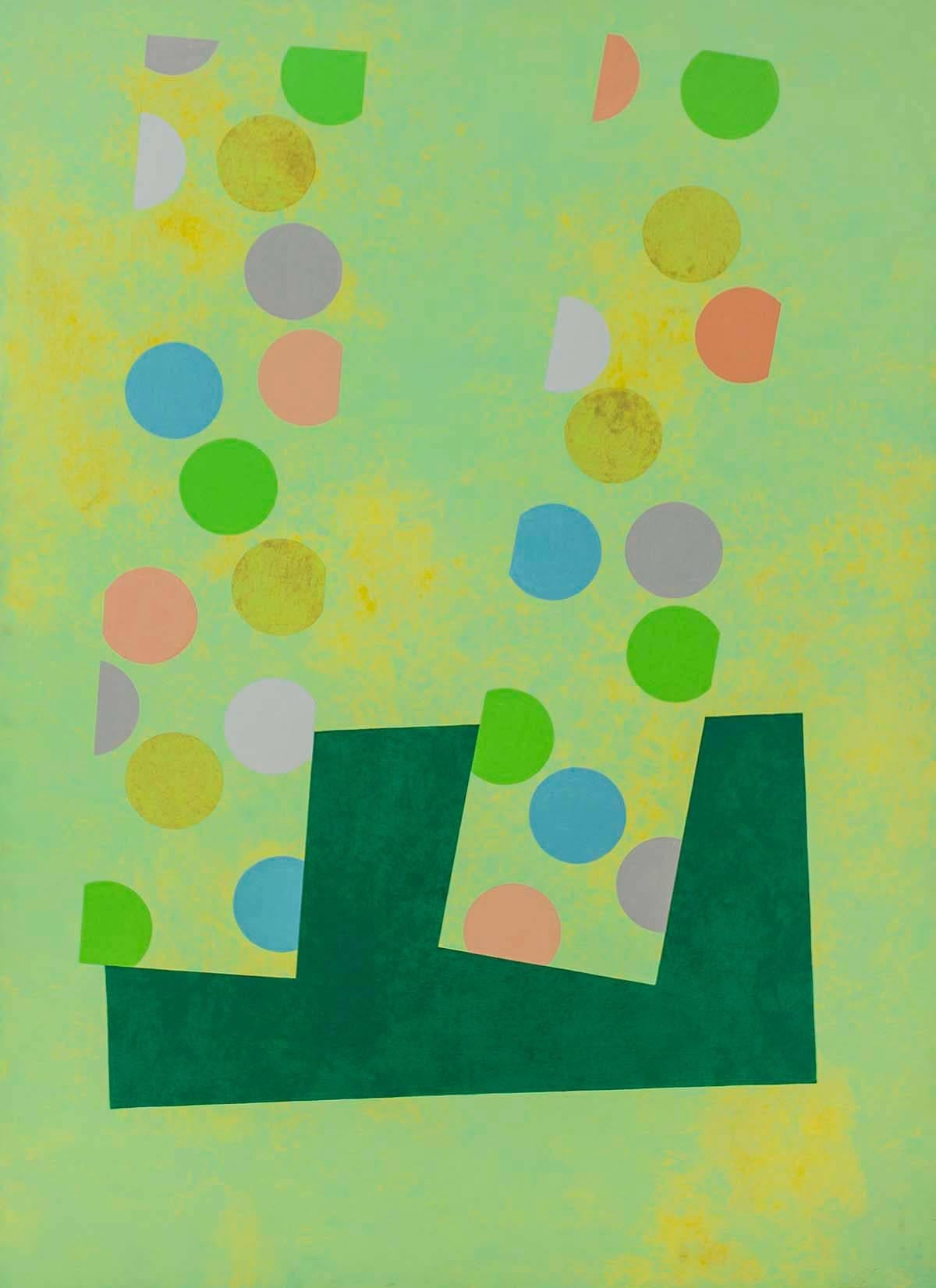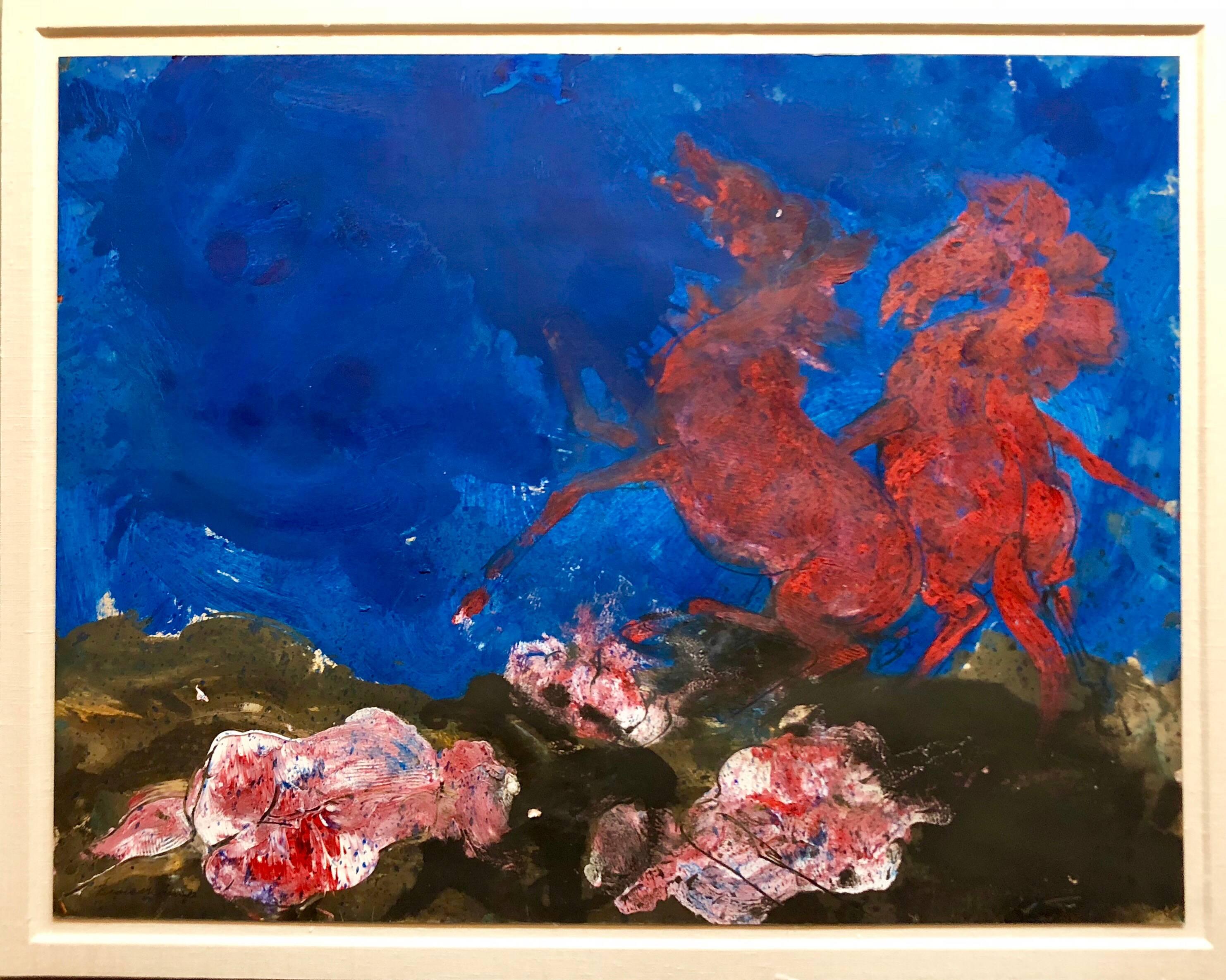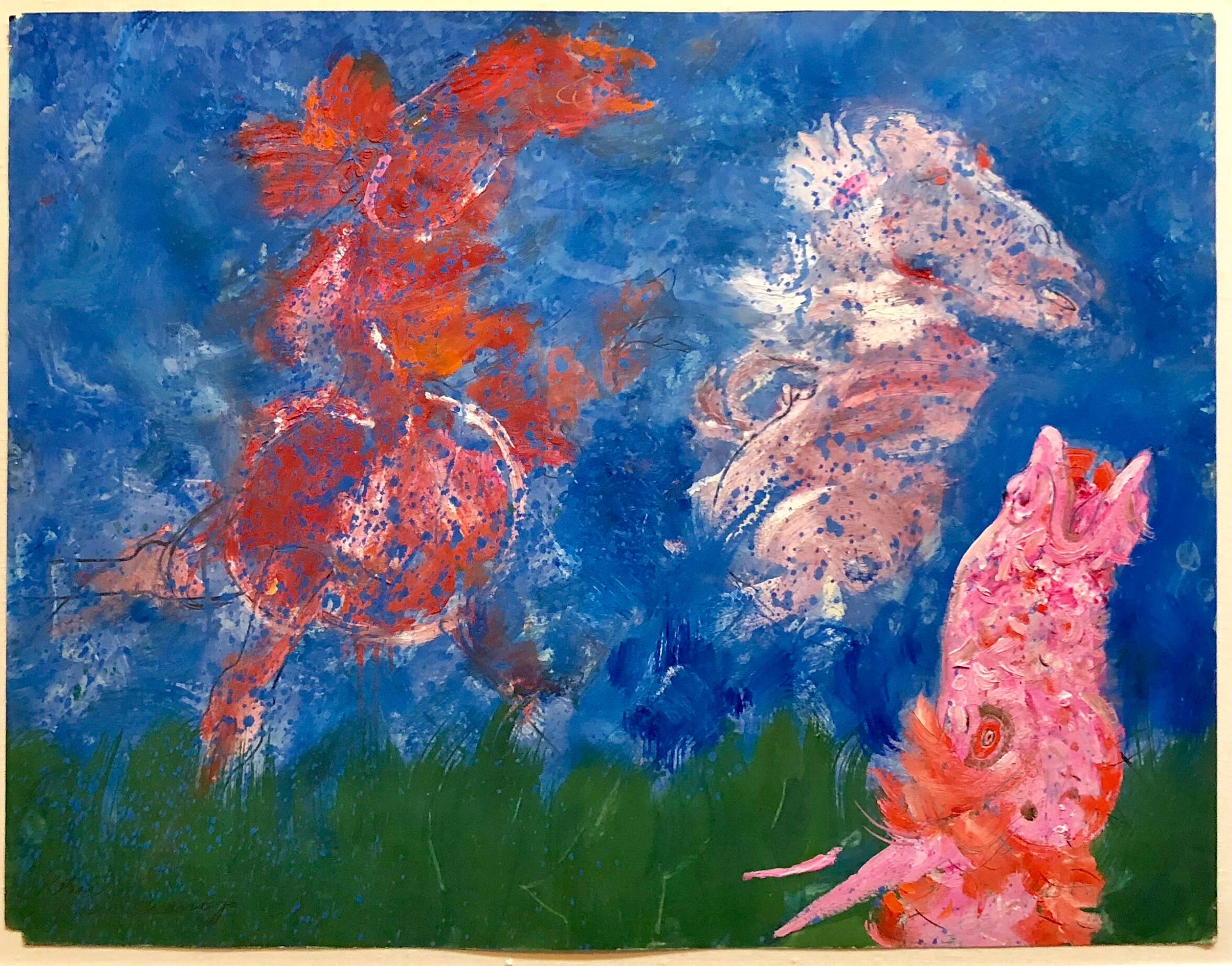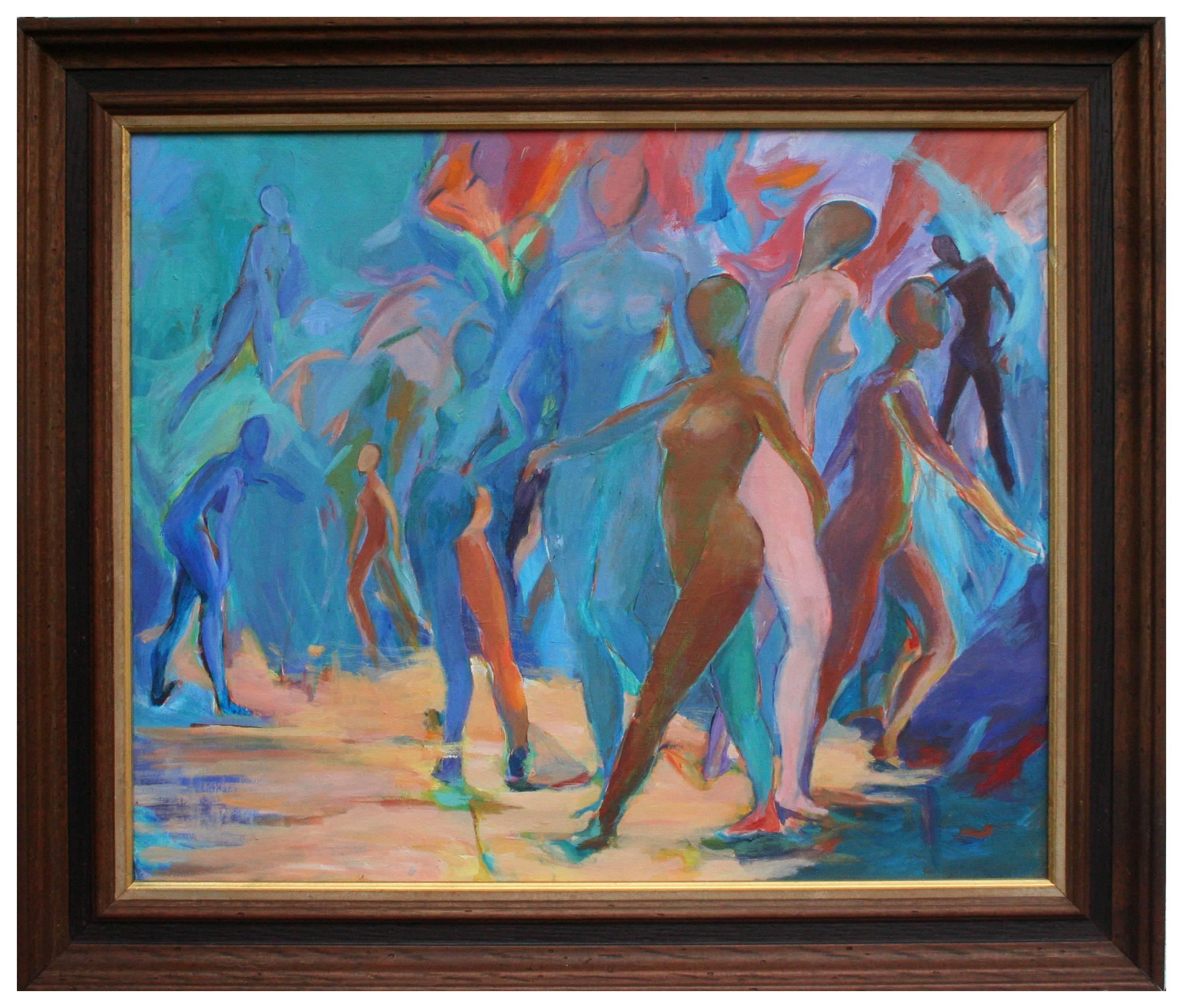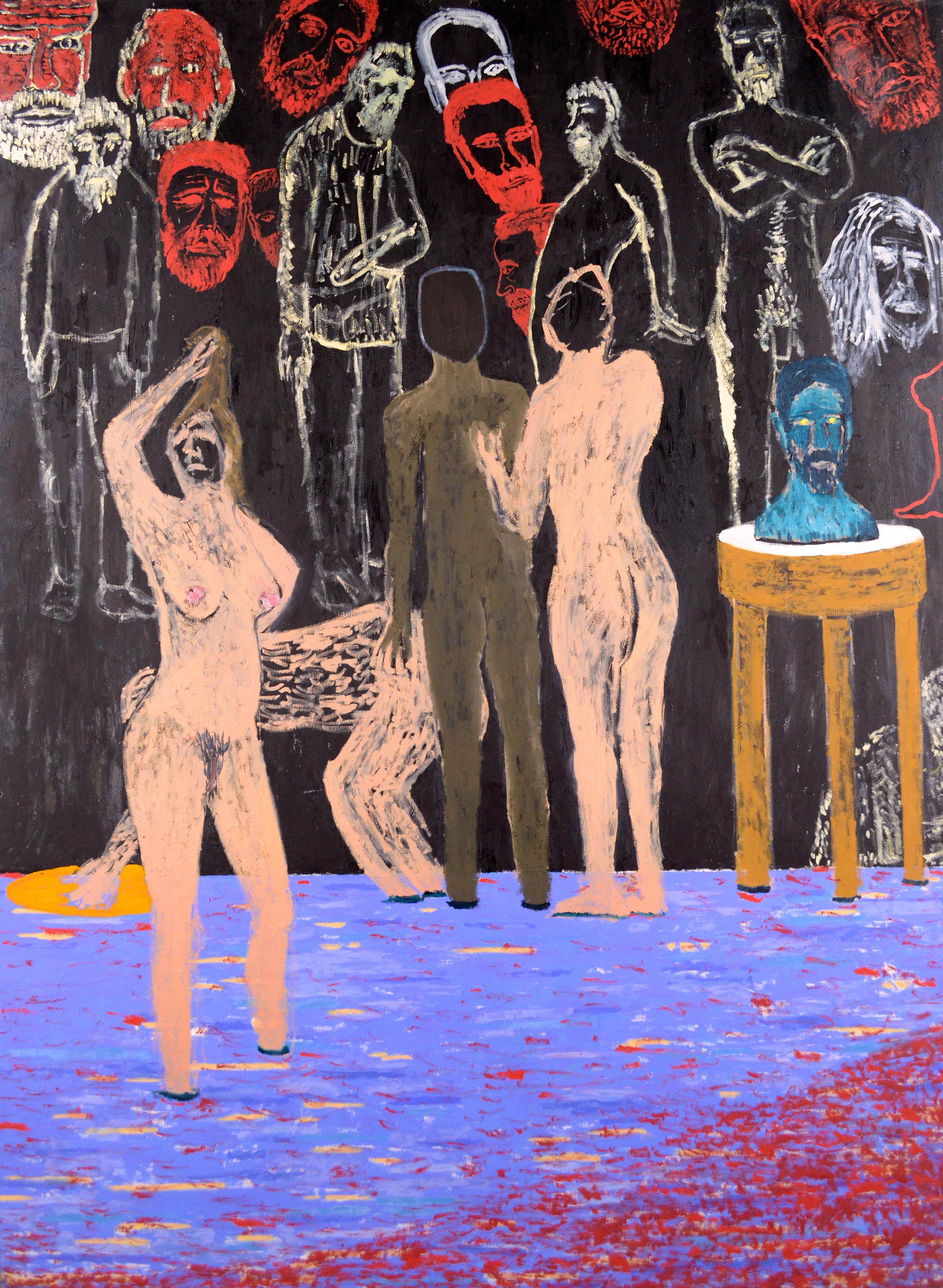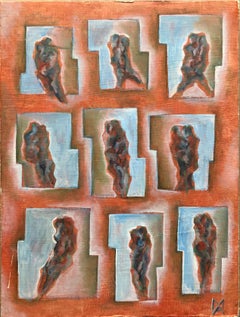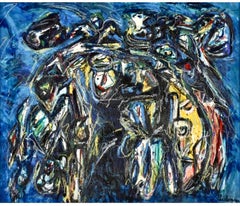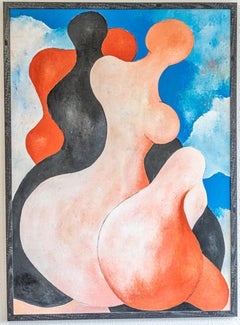
Prélude au yacht - Abstract painting by French contemporary artist
View Similar Items
1 of 6
Maxime TestuPrélude au yacht - Abstract painting by French contemporary artist2020
2020
About the Item
- Creator:Maxime Testu (French)
- Creation Year:2020
- Dimensions:Height: 39.38 in (100 cm)Width: 43.31 in (110 cm)Depth: 0.4 in (1 cm)
- Medium:
- Movement & Style:
- Period:
- Condition:
- Gallery Location:PARIS, FR
- Reference Number:1stDibs: LU2331211965552
Authenticity Guarantee
In the unlikely event there’s an issue with an item’s authenticity, contact us within 1 year for a full refund. DetailsMoney-Back Guarantee
If your item is not as described, is damaged in transit, or does not arrive, contact us within 7 days for a full refund. Details24-Hour Cancellation
You have a 24-hour grace period in which to reconsider your purchase, with no questions asked.Vetted Professional Sellers
Our world-class sellers must adhere to strict standards for service and quality, maintaining the integrity of our listings.Price-Match Guarantee
If you find that a seller listed the same item for a lower price elsewhere, we’ll match it.Trusted Global Delivery
Our best-in-class carrier network provides specialized shipping options worldwide, including custom delivery.You May Also Like
Matthias Alfen German Sculptor Modern Expressionist Painting Psychogram
By Matthias Alfen
Located in Surfside, FL
Matthias Alfen’s series of Janus figures are an innovation in figural art predicated on the advances made by the Futurist sculptor and painter Umberto Boccioni and the Modernist Alberto Giacometti. The qualities of chance and spontaneity, necessarily excluded in the sculptural work, are clearly evident in his drawings and paintings. “Psychograms” of unchoreographed hand movements display wide variation, repeatedly playing through one form after another. In the end, this multitude of variation serves to enhance the logic, consistency, and seductively rich appearance of Alfen’s designed sculptural works. Represented by Gallery Schuckin in New York, Paris, France, and Moscow, Russia.
Matthias Alfen’s was strongly influenced by his family’s experience during World War II. His grandfather Klemens Alfen (1894-1955) was an accomplished painter and photographer, recognized for his landscape photography and for his technique (Special Honors for Excellence in Photo-Print Technology, 1932). He enjoyed the friendship and support of many in the artistic community, a community largely influenced by its German Jewish members. Having lost his entire circle of friends under Nazi oppression. Klemens, although not Jewish, also suffered under the Nazis for refusing to join them and struggling in post-war Germany, which had nothing to offer an artist like him, Klemens took his own life.
At around the age of 16 he worked for some weeks as an assistant at his uncle’s art studio. Fritz Koenig...
Category
Late 20th Century Neo-Expressionist Abstract Paintings
Materials
Plywood, Oil
Untitled
By Richard Hennessy
Located in Surfside, FL
Richard Hennessy, 1972. Born in Rochester, NY, in 1941, Hennessy began as a gifted concert pianist studying at the Eastman School of Music from 1954-1959. He went on to study art history at the Institute of Fine Arts, New York University, from 1963-66, after which he began his career as a fine artist. His early paintings were quickly admired and supported by Henry Geldzahler, curator of Modern Art at the Metropolitan Museum of Art. His first exhibition was in 1969 at Olivier Bernier Inc. NYC, followed in 1970 by a show at the Tibor De Nagy Gallery, also in NYC. Over the years he has shown in San Francisco, Indiana, Arizona, Florida, and at other prominent NYC galleries including Robert Miller, Hamilton, John Good and a retrospective at NYU’s Grey Gallery...
Category
1970s Neo-Expressionist Abstract Paintings
Materials
Canvas, Oil
Large German Neo Figuarist Abstract Expressionist Oil Painting Werner Liebmann
Located in Surfside, FL
WERNER LIEBMANN (German b. 1951)
"Elf Köpfe Bei Nacht,"
Oil on canvas, signed L/R, "Liebmann;"
29 1/4'' x 35 1/2'', framed 31'' x 37''.
Werner Liebmann (born 1951) is a German painter and graphic artist .
Werner Liebmann was born in Königsthal in Thuringia. Born in Königsthal from 1969 to 1973 he studied chemistry at the Martin Luther University in Halle (Saale) . From 1973 to 1976 he worked as a project engineer. He was active as a chemist until he opted for an artistic career and studied painting at the University of Art and Design in Halle. A master student of Bernhard Heisig, he graduated at the College of Fine Arts Leipzig.
Since then, he has been a freelance artist, as well as a professor at the College of Fine Arts in Dresden and currently at the Art school Berlin – Weissensee. His works were represented at numerous group exhibitions and solo exhibitions in Halle, Hamburg, Berlin, Düsseldorf and further cities, mostly in Germany. Influenced by the Neo Figuraist artists of the Junge Wilde painters. In 1978, the Junge Wilde painting style arose in the German-speaking world in
opposition to established avant garde, minimal art and conceptual art. It was linked to the similar Transavanguardia movement in Italy, USA (neo-expressionism) and France (Figuration Libre). The Junge Wilde painted their expressive paintings in bright, intense colors and with quick, broad brushstrokes very much influenced by Professor at the Academy of Art in Berlin, Karl Horst Hödicke (b:1938). They were sometimes called the Neue Wilde. Berlin: Luciano Castelli, Rainer Fetting...
Category
Late 20th Century Neo-Expressionist Abstract Paintings
Materials
Canvas, Oil
Les Aériennes
By Jean Sanglar
Located in Miami, FL
Born in the South of France in 1926 and raised by very strict parents, Jean Sanglar was prohibited from playing with same age mates.
Truly talented, as a young boy he drew frequentl...
Category
Late 20th Century Neo-Expressionist Abstract Paintings
Materials
Oil Crayon, Oil Pastel, Pastel, Mixed Media, Oil, Acrylic
Rhino Horn Artist "Space Dream, 1973" Figurative Expressionist Abstract
By Jay Milder
Located in Surfside, FL
Jay Milder (born 1934) is an American artist and a figurative expressionist painter of the second generation New York School. Old Testament themes such as Jacob's Ladder and Noah’s Ark, and the Jewish mystical beliefs of the Kabbalah, are recurring themes in Milder’s paintings which are presented as archetypal images that recur in the basic karma, make-up and need of human nature. Internationally exhibited, Milder is included in the collections of many national and international museums.
He has been the subject of two, recent retrospectives in Brazil in 2007 at the National Museum Brasilia and, in 2006, at the Museum of Modern Art, in Rio de Janeiro. He is renowned in Sao Paulo, one of the major international centers for street and public art, as a seminal influence on graffiti artists. Jay Milder was born in Omaha, Nebraska, in 1934. His grandparents, who came from the Ukraine, were descendants of the Hasidic mystic, Rabbi Nachman. As he listened to family stories his interest in spiritualism and mysticism increased, and became an important influence on his philosophy of life and art. Later, when he arrived in New York, he was drawn to the Theosophical Society and the teaching of Helena Blavatsky.
In 1954 Milder visited Europe where he studied painting with André L’Hote, and sculpture with Ossip Zadkine. He spent much time studying at the Louvre Museum, and at the studio of Stanley Hayter. During his Paris years the paintings of the Jewish painter Chaim Soutine, primarily influenced him. Milder returned to the United States in 1956, and he began studying painting at the Chicago Art Institute. He exhibited with the Momentum Group, an alliance of artists who were particularly dedicated to the progression of figurative art and its global origins.
In 1957, Milder spent the summer in Mexico for a summer where he exhibited in Puebla. That year he received the Mexican Government’s Honor Award for artists.
In the summer of 1958, Milder studied with Hans Hofmann in Provincetown, Massachusetts. He exhibited his work at the Sun Gallery, with his contemporaries, including Mary Frank, Red Grooms, Bob Thompson, Lester Johnson, Emilio Cruz and Alex Katz, among others. During this period his painting began to incorporate iconography of birds, animals, humans and animal/human hybrids. In 1958, Milder, Bob Thompson and Red Grooms, founded the City Gallery in the Chelsea section of New York City. The gallery moved downtown and became the Delancey Street Museum and an early site for ‘Happenings’,which Milder participated in.
He showed his first major series called Subway Runners in 1960 at the Martha Jackson Gallery in New York City. Milder began a group of smaller paintings, entitled “Messiah Series”, in the late 1960s. These were fully expressionistic earth toned pictures, and he completed around 250 paintings in the series, based on biblical themes from the Old Testament. When 40 of these paintings were shown in a traveling exhibition premiering at the Richard Green Gallery in New York City, in 1987, art critic Donald Kuspit wrote in ArtForum Magazine: “after Nolde’s biblical pictures, these are the best and most integral group of biblical pictures in the 20th century.”
During the 1970s, Milder co-founded a collective group called Rhino Horn with Peter Passuntino, Peter Dean, Benny Andrews, Nicholas Sperakis, Michael Fauerbach, Ken Bowman, Leonel Gongora, and Bill Barrell...
Category
1970s Neo-Expressionist Abstract Paintings
Materials
Canvas, Oil
American Neo Expressionist Woman with Monkeys Abstract Modernist Oil Painting
By Robert Beauchamp
Located in Surfside, FL
Robert Beauchamp, American (1923-1995)
Untitled
Hand signed lower right, titled verso.
MIxed media oil painting on heavy art paper
sight: 22 3/4 x 29 1/2 inches
frame dimensions: 23 1/4 x 30 1/4 x 1 1/4 inches, metal frame with glazing
Provenance: Private Collection. Frame inscribed 'Property of AT&T' Bears label from their corporate art collection.
Robert Beauchamp (1923 – March 1995) was an American figurative painter and arts educator. Beauchamp's paintings and drawings are known for depicting dramatic creatures and figures with expressionistic colors. His work was described in the New York Times as being "both frightening and amusing,". He was a Guggenheim Fellow and a student of Hans Hofmann.
Robert Beauchamp was born in Denver, Colorado in 1923. He had three brothers and three sisters, and the children were orphaned by both parents by the time Beauchamp was three. The family grew up impoverished due to the Great Depression, living in a community house with other families. As a child he dabbled in art but it wasn't until high school that he began taking art classes. When not creating art he also played sports; football and basketball, and enjoyed chemistry and geology.
He was told he was good at drawing, and replaced study hall classes with art classes, receiving instruction and inspiration from a Welsh teacher named R. Idris Thomas. While in high school Beauchamp would go, every Monday, to the public library and a local museum where he would read books about art; specifically French painting, as assigned by Thomas. Beauchamp absorbed the tenets of European Modernism and American Abstract Expressionism—with which he eventually broke. While abstraction, with its focus on color and form, underlies his compositions, he filled canvas and paper with psychologically acute portraits of himself and others, nudes, animals, and objects of all kinds. Beauchamp would spend upwards of four hours a day in the art room and eventually won the Carter Memorial Prize, which provided a scholarship to the Colorado Springs Fine Arts Center. At Colorado Springs he studied under Boardman Robinson, painting landscapes in nature.
Beauchamp eventually joined the Navy and then returned to Colorado Springs to continue his studies. Traveling the world as an Armed Guard, he spent a year and a half at sea and the rest of the three years in San Francisco. Seeking to make money, and to follow his love for a girl, Beauchamp decided to attend Cranbrook Academy of Art from 1947–1948. There he studied pottery, believing one could "make more money selling pots than you could selling paintings." He described his experience at Cranbrook as intimidating and claustrophobic, and eventually switched to sculpture before switching to painting.
Beauchamp moved to New York City in the early 1950s and was involved in the Tenth Street galleries, which provided outlets for more experimental artists and the second generation of abstract expressionists. Despite his involvement with 10th Street and friendships with abstract artists, abstract art never interested in him. He showed at numerous galleries in New York and Provincetown, socializing with gallery owners, artists and collectors. His first exhibition was at the Tanager Gallery in New York, he also showed during the 1950s at the Hansa Gallery. In New York and Provincetown he studied under Hans Hofmann Eventually he felt that abstract expressionism became dull and stalemated.
During the 1960s he showed at the Green Gallery. C. 1960 he was awarded a Fulbright Award allowing him to travel to La Romola, Italy. He traveled frequently to cities such as Rome and worked constantly. Beauchamp returned to the states and lived in Provincetown at Walter Gutman...
Category
20th Century Neo-Expressionist Abstract Paintings
Materials
Paper, Oil
Recently Viewed
View AllMore Ways To Browse
Lincoln Sculpture
Open Mind Open Heart
The Dakota
Used Doors Los Angeles
Pink Heart Painting
Tar Tar
Abstract Fruit Painting
Blue Rothko
Letting Go
Four Seasons Hotel
S Lee Painting
Music Department
Caribbean Oil Paintings
Paul Klee Exhibition
36 Inch Sculpture
Large Neutral Painting
Expressionist Painting Pink And Blue
Roland Artist
